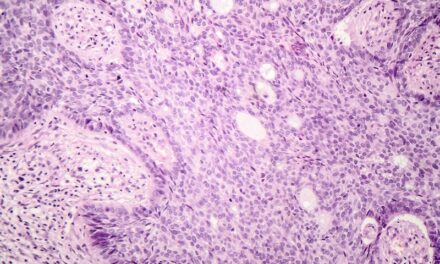Proscia, a provider of digital and computational pathology solutions, has released study results on new technology that leverages artificial intelligence (AI) melanoma detection, the deadliest form of skin cancer, with a high degree of accuracy. The findings illustrate the promise of AI to deliver faster diagnoses, improve patient outcomes, and optimize laboratory economics in the routine practice of pathology.
Proscia’s prospective study, conducted at Thomas Jefferson University and the University of Florida, demonstrated the real-world performance of AI on an uncurated set of 1,422 sequential skin biopsies. The melanoma detection technology correctly identified invasive melanoma and melanoma in situ with a sensitivity of 93% and a specificity of 91%. It also classified basal cell carcinoma and squamous cell carcinoma with an area under the curve (AUC) of 0.97 and 0.95, respectively, accounting for a combined 97% of all skin cancers. This study validated the results of a multi-site retrospective study of 12,784 images, which will be presented during the Computational Challenges in Digital Pathology Workshop at the 2021 International Conference on Computer Vision1.
“The performance of Proscia’s technology in detecting melanoma and other malignant skin diseases is impressive,” says Kiran Motaparthi, MD, FAAD, director of dermatopathology and clinical associate professor of dermatology at the University of Florida. “This is an exciting development as pathologists increasingly look to unlock new sources of value from artificial intelligence.”
In addition to the prospective and retrospective studies, Proscia says it is conducting additional research to demonstrate the potential benefits of AI in dermatopathology for melanoma detection, including:
- Delivering faster results to patients. AI that automatically identifies melanoma alerts the pathologist to these high-risk cases, flagging them for earlier diagnosis. As the volume of skin biopsies continues to rise amid a declining pathologist population, this detection could help to ensure that patients with the most clinically impactful diagnoses are prioritized so that they can begin treatment sooner.
- Driving consistency in the diagnosis of difficult melanoma cases. In addition to being the most lethal skin disease, melanoma is among the most challenging to diagnose, leading to interobserver variability among pathologists2. The ability of AI to distinguish melanoma from benign mimickers could serve as an adjunctive aid to the pathologist, increasing diagnostic accuracy and improving patient outcomes.
- Optimizing laboratory productivity to enhance profitability. More than 15 million skin biopsies are taken annually in the United States3, each of which may display one of hundreds of diagnoses. AI that classifies and distinguishes melanoma and non-melanoma skin cancer could enable laboratories to optimize case distribution among specialists and non-specialists, resulting in efficiency gains that make it possible to process more case volume and partially overcome the impact of declining reimbursements.
“Proscia’s technology represents a significant advancement in our work on skin pathology,” says Julianna Ianni, PhD, Proscia’s vice president of AI Research & Development. “Our AI not only identifies melanoma, a difficult diagnosis, but also accounts for the high degree of variation in disease to push the boundaries of deep learning in medicine. In doing so, it holds great promise to help pathologists deliver faster, more consistent diagnoses and improve patient outcomes.”
The AI validated in the melanoma detection study expands upon the technology that powers Proscia’s DermAI application*. Available on the Concentriq digital pathology platform, DermAI provides an AI-based classification for every skin case to drive efficiency and quality gains. The company says, the application’s performance was demonstrated in one of pathology’s most comprehensive studies to date, and it continues to be validated and deployed as part of Proscia’s ongoing work in AI. The company is also collaborating with leading academic and commercial laboratories, including LabPON, Johns Hopkins School of Medicine, Unilabs, University Medical Center Utrecht, and University of California, San Francisco, to accelerate the adoption of AI in pathology.
*DermAI is available for research use only.
References
1 Sankarapandian, S. Kohn, S., Spurrier, V., Grullon, S., Soans, R.E., Ayyagari, K.D., Chamarthi, R.V., Motaparthi, K., Lee, J.B., Shon, W., Bonham, M., Ianni, J.D. A Pathology Deep Learning System Capable of Triage of Melanoma Specimens Utilizing Dermatopathologist Consensus as Ground Truth. To be presented at CDPath Workshop at ICCV 2021. https://arxiv.org/abs/2109.07554.
2 Elmore, J. G., Barnhill, R. L., Elder, D. E., Longton, G. M., Pepe, M. S., Reisch, L. M., Carney, P. A., Titus, L. J., Nelson, H. D., Onega, T., Tosteson, A., Weinstock, M. A., Knezevich, S. R., & Piepkorn, M. W. (2017). Pathologists’ diagnosis of invasive melanoma and melanocytic proliferations: observer accuracy and reproducibility study. BMJ (Clinical research ed.), 357, j2813. https://doi.org/10.1136/bmj.j2813
3 Klipp, J. (2019). The U.S. Anatomic Pathology Market: Forecast & Trends 2019-2021. Laboratory Economics. Poughkeepsie, NY.




